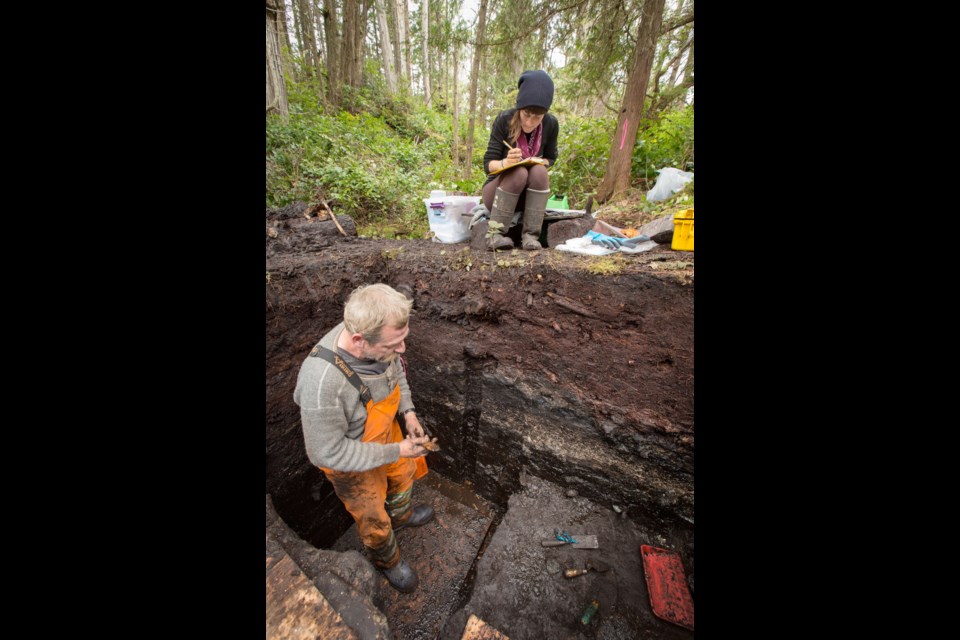An ancient village discovered on Triquet Island, north of Vancouver Island, is three times older than the pyramids — making it one of the oldest known settlements in North America.
Alisha Gavreau, a PhD student at the University of Victoria, was part of a team of archeologists who unearthed the settlement on Triquet Island, on B.C.’s central coast about 150 kilometres north of Port Hardy.
“This site shows repeated occupation from as early as 14,000 years [ago] until present day,” said Gauvreau, a scholar with the Hakai Institute, which is funding the research.
The settlement is about as old as the Manis Mastodon spear tip found on the Olympic Peninsula in Washington. Its discovery pushed estimates of the earliest human inhabitation on the coast back 800 years to about 13,800 before the present era.
While many other ancient settlements show people coming and going based on climate patterns and natural disasters, the Triquet site has been a “very important place for people to be at for millennia,” Gavreau said.
The archeology team excavated a three-metre trench on a rocky spit on the island.
The team carefully dug through soil and peat until they found a paleosol, a thin layer of soil, about 21Ú2 metres below the surface. It was there they found an area resembling a hearth or small fire pit.
Tiny charcoal flakes were recovered and sent for carbon dating, which revealed that the remnants were more than 14,000 years old.
Other items found include volcanic glass tools used for cutting, woodworking tools, a device used to launch projectiles, fish hooks and a nodule of graphite, used as pigment in carvings.
“There are some wonderful artifacts that are helping us better understand what people were doing in this area over time,” Gauvreau said.
Wooden artifacts from the site are being analyzed and will be turned over to the Royal B.C. Museum. Gauvreau and the team plan to head back to Triquet Island in May to continue their research.
She said there is evidence of two tsunamis, about 6,700 and 5,600 years ago.
“What makes these places so special that people keep going back there,” even after a catastrophic event, she said.
The discovery lends support to the oral history of the Heiltsuk Nation, which has long said its peoples have inhabited the area for generations.
“To know that that history has survived thousands of years of transmission through different generations to the present day, and to have that reaffirmed by archeological information, is very powerful,” said William Housty, a member of the board of directors for the Heiltsuk Integrated Resource Management Department.
According to Heiltsuk Nation oral tradition, the island remained ice-free during the last ice age, when much of North America was covered by glaciers.
“It was one of the very few places on our territory where the ice didn’t reach and because of that, that was where our people flocked for survival,” Housty said.
The archeological findings support that, and also show that sea levels have been relatively stable in that area, which is why the island was not submerged like other ancient villages.
Housty said the discovery shows “how the history that we’ve been talking about for thousands of years is true, it’s not just something that has been made up.”



